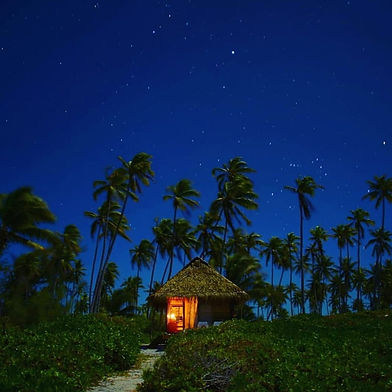
FAKARAVA
The Island of Dreams
TUAMOTU ISLANDS
Where is Fakarava located?
There are daily flights to Fakarava from Tahiti. The flight time is 70-minutes. In addition, there are about 3 flights a week from Rangiroa. That flight time is 40-minutes. Because of the increased number of flights, Fakarava is now more accessible to tourists. From the air, Fakarava looks like a large rectangle. It is 37 miles long by 15 miles wide. There are two passes into the lagoon. The main pass (in the north) is known as Passe Garuae. It is the largest pass in French Polynesia. The much smaller pass in the south is called Tumakohua. Due to the fact there only a few miles of road, there is very little need for public transportation. While some locals do have cars, you’ll see even more get around with scooters and bicycles.

Introduction to Fakarava
Fakarava is home to the second largest lagoon in the Tuamotus. So pure is the environment, that Fakarava has been named a Biosphere Reserve by UNESCO.
As a result, you’ll find rare birds, plants and crustaceans. Furthermore, Fakarava is one of the best scuba diving destinations in the world. Here, the dive sites are virtually undiscovered. There is an abundance of sea life, including, most notably Lemon Sharks, Oceanic White Tip and Hammerhead Sharks (during season). As such the local community is actively involved in UNESCO’s conservation efforts. Most of the 400 residents are pearl and copra (coconut) farmers. They live primarily in the two villages of Rotoava or Tetamanu. Because their livelihood depends on natural resources, they understand the importance of sustainable development. The community works together to protect the area’s biodiversity.
Fakarava means “beautiful” or “making things superb.”
FAKARAVA

What to do in Fakarava
ACTIVITIES & EXCURSIONS
Although you may be drawn to Fakarava for her remote location and savage beauty, the fact is, scuba diving is the #1 reason to visit Fakarava. Therefore, we recommend you split your stay between the north and south to experience both passes! When you’re not diving, we suggest you visit the village of Tetamanu in the south. Here you’ll find an old Catholic church made entirely of coral. It was built by the early missionaries. While staying in the north, we suggest you hop on a bike and explore the village of Rotoava. Be sure to visit the Topaka Lighthouse. This is a 45-foot stone structure shaped like a pyramid. Life in Fakarava is quiet. Leisurely activities include nothing more than fishing, snorkeling, scuba diving and walking along the beach. Here you have no choice but to slow down and appreciate life.
Map of Fakarava
Favakara Hotels
WHERE TO STAY IN FAKARAVA - HOTELS AND RESORTS
While there are no resorts on the island, Fakarava does have a number of small family run guesthouses. Known as pensions, these guesthouses provide a unique and personal introduction to the Pauamotu way of life. Since Rotoava is the main village, it is also where you’ll find the majority of guesthouses. Our favorites on this part of the atoll are the Havaiki Lodge and Tokerau Village. In the southern part of Fakarava, you’ll find our favorite guesthouse – Pension Raimiti. Here you can expect to have a true Robinson Crusoe experience. If you want to be close to the diving in the south pass, we recommend the Pension Motu Aito Paradise. In conclusion, these guesthouses provide a unique firsthand experience. We’re certain you’ll leave Fakarava with lasting memories and life long friendships.

